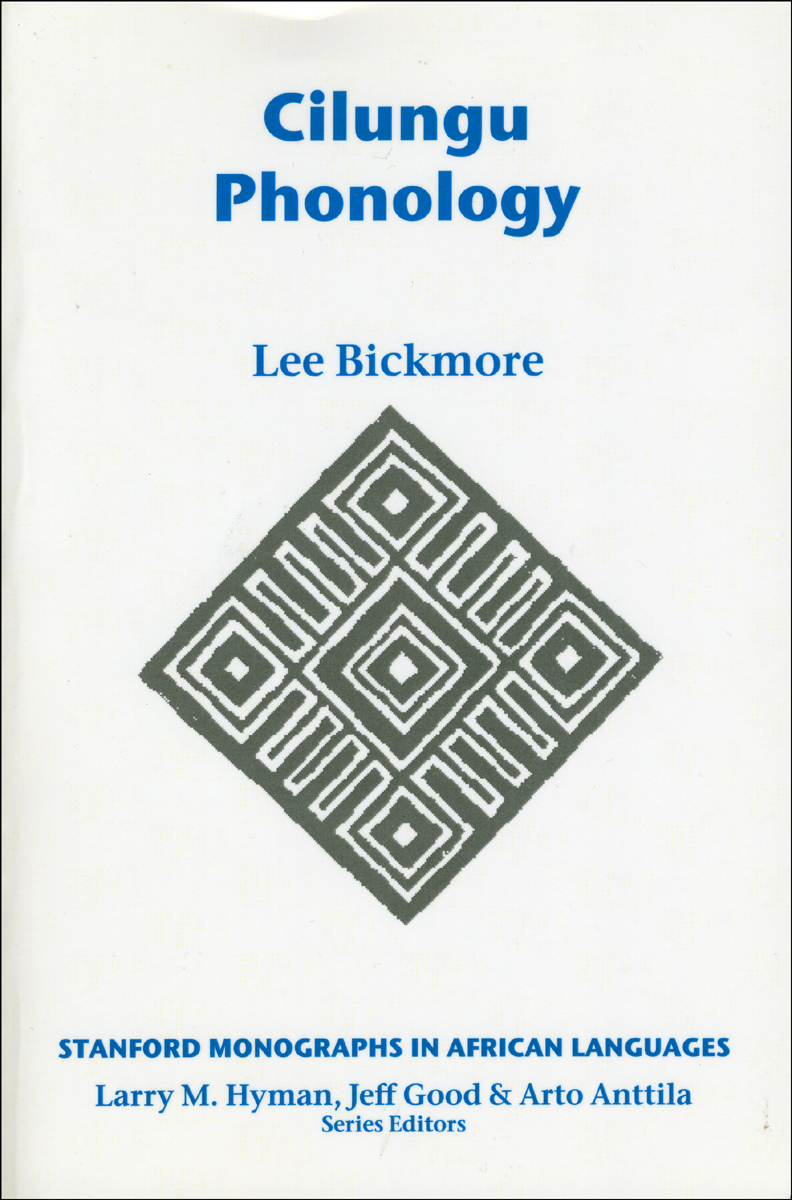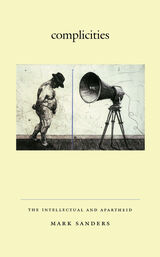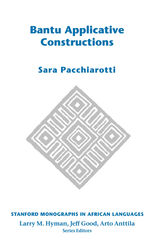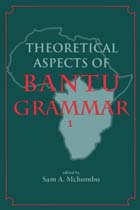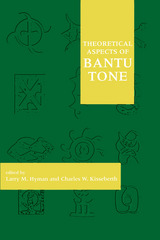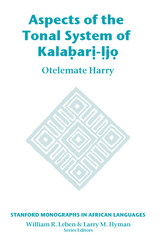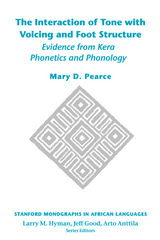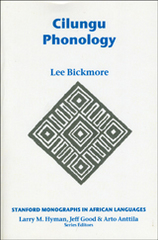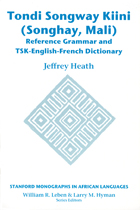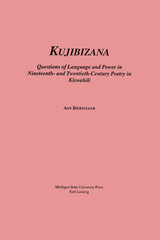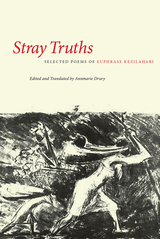Cilungu Phonology
by Lee Bickmore
CSLI, 2007
Paper: 978-1-57586-550-8 | eISBN: 978-1-57586-772-4
Library of Congress Classification PL8484.M395L863 2007
Dewey Decimal Classification 496.391
Paper: 978-1-57586-550-8 | eISBN: 978-1-57586-772-4
Library of Congress Classification PL8484.M395L863 2007
Dewey Decimal Classification 496.391
ABOUT THIS BOOK | AUTHOR BIOGRAPHY | TOC
ABOUT THIS BOOK
Featuring a reference grammar and formal analysis of Cilungu, this volume will be a major contribution to our understanding of tonology, since several of the forty-four processes analyzed appear to be unique to the language. It also includes a discussion of morphology, both nominal and verbal.
Cilungu is an underrepresented language spoken in northern Zambia and Tanzania whose future is far from certain, given ongoing urbanization and the ascendancy of other regional languages. The product of over fifteen years of fieldwork, Cilungu Phonology presents a comprehensive description and analysis of this endangered language.
Featuring a reference grammar and formal analysis of Cilungu, this volume will be a major contribution to our understanding of tonology, since several of the forty-four processes analyzed appear to be unique to the language. It also includes a discussion of morphology, both nominal and verbal.
AUTHOR BIOGRAPHY
Lee Bickmore is associate professor in the department of anthropology, program in linguistics and cognitive science at the University at Albany, New York.
TABLE OF CONTENTS
CONTENTS Acknowledgments vii Abbreviations xv 1 Introduction 1 1.1 Speaker Demographics and Genetic Affiliation of the Language 1 1.2 Data Sources 3 1.3 Motivation, Goals and Coverage of this Study 5 1.4 Outline of Chapters 10 1.5 Vowel and Consonant Inventories 10 2 Morphology 13 2.1 Nominal Morphology 13 2.1.1 Overview of Noun Class Prefixes 2.1.2 Locatives 2.1.3 Diminutives 2.1.4 Augmentatives 2.1.5 Deverbal nouns 2.1.6 Copulatives 2.1.7 Class Agreement in Nominal Modifiers 2.2 Verbal Morphology 27 2.2.1 Subject and Object Markers 2.2.2 Extensions 2.2.2.1 Applicative 2.2.2.2 Reciprocal 2.2.2.3 Stative 2.2.2.4 Passive 2.2.2.5 Short Causative 2.2.2.6 Long Causative 2.2.2.7 Intensive 2.2.2.8 Transitive Reversive 2.2.2.9 Other Extensions 2.2.2.10 Combining Extensions 3 Phonology of Segments and Syllables 41 3.1 Rules affecting Vowel Length 42 3.1.1 Vowel Deletion 3.1.2 Gliding 3.1.3 Nasal Demorification 3.1.4 Final Vowel Shortening 3.1.5 Trimoraic Pruning 3.1.6 Pre-stem Shortening 3.2 Phonemic Status of Glides 58 3.3 Segmental Rules 60 3.4 Mid Vowel Harmony 76 3.5 Consonant Mutation & the Short Causative 80 3.6 Long and Short Passives 109 3.7 Realization of 1 sg. and 3 sg. Subject Markers 112 4 Imbrication 117 4.1 Imbrication Illustrated and Defined 117 4.2 Requirements for Imbrication to be Triggered 123 4.3 Secondary Imbrication 130 4.4 Imbrication and Consonant Mutation 132 4.5 Passive Perfectives 135 4.6 Extension Reduplication 138 4.7 Remaining Issues 144 5 Tense/Aspect/Mood System and its Tonology 147 5.1 TAMs with no Melodic H 147 5.1.1 Present Progressive 5.1.1.1 Underlying Tones and H Tone Spreading 5.1.1.2 Stems with V-initial roots 5.1.1.3 Influence on Spreading from Glides in a Word-final syllable 5.1.1.4 CV Roots 5.1.1.5 The 1sg Subject Marker 5.1.1.6 Onsetless SMs: 3 sg. (Class1), Class 4, and Class 9 5.1.1.7 Negative Present Progressive 5.1.1.8 Present Progressive Relatives 5.1.2 Past Inceptive 5.1.3 Contrastive Habitual 5.1.4 Future Continuative 5.1.5 Future Progressive 5.1.6 Hortative 5.1.7 Persistive Potential 5.1.8 Immediate Future 5.1.9 Habitual 5.1.10 Persistive 5.2 TAMs with Melodic H: Realization on the FV 228 5.2.1 Potential 5.2.2 Yesterday Past 5.2.3 Yesterday Past Progressive 5.2.4 Recent Past 5.2.5 Recent Past Progressive 5.2.6 Recent Perfect 5.2.7 Recent Perfect 2 5.3 TAMs with Melodic H: Realization on V2- FV 277 5.3.1 Far Past 5.3.2 Far Past 2 5.3.3 Far Past Progressive 5.3.4 Remote Future 5.3.5 Remote Perfect 5.3.6 Negative of Persistive and Contrastive Habitual 5.3.7 Perfect 5.3.8 Narrative Past 5.3.9 Subjunctive 5.3.10 Imperative 5.4 Summary and Analysis of Verbal Tonology 310 5.5 Tonology and Reduplication 316 6 Tonology of Verbal Infinitives 327 6.1 Affirmative Infinitive 327 6.1.1 General Description and Comparison with 2 sg. Present Progressive Forms 6.1.2 Motivating a Nominal Melodic High Tone 6.1.3 Reduplicated & Andative Infinitival Forms 6.2 Negative Infinitive 342 7 Tonology of Nouns 347 7.1 Nominal & Adjectival Morphology 347 7.2 The tonology of Phrase-initial Nouns 350 7.2.1 Nouns with Toneless Stems 7.2.2 Nouns with a Stem-final H 7.2.3 Nouns with a Stem-initial H 7.2.4 Nouns with a Stem-medial H 7.2.5 Nouns with Two Stem Hs 7.2.6 Totally Toneless Nouns 7.2.7 Proper Nouns and Summary of Underived Nominal Stems 7.3 Deverbal Nouns 365 7.4 Locatives 368 7.5 Diminutives 373 7.6 Augmentatives 374 7.7 Copulatives 375 7.8 Tonal Properties of the Preprefix 385 7.8.1 Optionality of the Preprefix in Isolation Forms 7.8.2 The Preprefix of Nouns in Non-phrase-initial Position 8 Compound Verbs 395 8.1 Compound Verbs Whose Final Element is the Infinitive 395 8.1.1 Continuative 8.1.2 Present Obligative 8.1.3 Present Obligative 2 8.1.4 Yesterday Past Obligative 8.1.5 Far Past Obligative 8.1.6 Irrealis Obligative 8.2 Compound Verbs Whose Final Element is the Subjunctive 400 8.2.1 Strict Obligative 8.2.2 Present Obligative 3 8.2.3 Near Future 8.3 Compound Verbs Whose Final Element is the Recent Perfect 401 8.3.1 Past of Earlier Today 8.3.2 `as soon as' Recent Completive 8.3.3 `as soon as' Completive 8.3.4 `as soon as' Recent Progressive Completive 8.3.5 `as soon as' Perfect 8.3.6 `as soon as' Future Anterior 8.3.7 `as soon as' Remote Progressive Completive 8.4 Compound Verbs Whose Final Element is the Remote Perfect 404 8.4.1 Future Anterior 8.4.2 Compound Remote Perfect 8.5 Compound Verbs Whose Final Element is the Present Progressive 405 8.5.1 Future Persistive 8.5.2 Immediate Past Progressive 8.5.3 Persistive 2 8.5.4 Immediate Past Persistive 8.5.5 Past Persistive 8.5.6 Conditional Persistive 8.6 Compound Verbs Whose Final Element is the Narrative Past 409 8.6.1 Immediate Perfect 8.6.2 Remote Completive 8.6.3 Compound Perfect 8.6.4 Remote Completive 8.6.5 Future Anterior 2 8.7 Compound Verbs Whose Final Element is the Past Inceptive 414 8.7.1 Immedidate Future Progressive 2 8.7.2 Conditional 8.8 Compound Verbs Whose Final Element is the Hortative 415 8.8.1 Near Future Progressive 8.9 Compound Verbs Whose Final Element is the Remote Perfective 415 8.9.1 Past Perfect 9 Phrasal Tonology 417 9.1 The Prosodic Hierarchy 417 9.2 Evidence for Phonological Phrases: Bounded vs. Unbounded Spreading 418 9.3 Evidence for Intonational Phrases: Unbounded Spread to the Penult 421 9.4 Inter-word H tone Spreading 422 9.5 Fusion Across Words 429 9.6 Evidence for the Clitic Group 430 9.7 Associative Phrases 438 9.8 Non-tonal Rules Across Words 446 10 Summary of Prosodic and Tonal Processes 451 10.1 Tone Bearing Units 451 10.1.1 Tonal Underspecification and the Mora as the TBU 10.1.2 Status of pre-C Nasal as Tone Bearing Unit 10.1.3 Glides, Including Short Causative & Passive 10.2 Summary of Relevant Morphological Domains 458 10.2.1 Stem 10.2.2 Macrostem 10.3 Summary of Most Productive Tonal Processes 460 10.3.1 Unbounded Spreading 10.3.2 Bounded Spreading 10.3.3 Fusion 10.4 Review of Tonal Contrasts; Paradigmatically & Syntagmatically 468 10.4.1 Basic Contrasts & Neutralizations 10.4.2 C'v`vC'v vs. C'v`'vC'v 10.4.3 Distribution of Rising Tones 10.4.4 Trimoraic Pruning 10.4.5 Realization of Onsetless V after a like V 10.5 Downstep Shift and High Delinking 489 10.5.1 Downstep Shift in CVVNCV Sequences 10.5.2 Downstep Shift in Verbs with V-initial Roots 10.5.3 Resolution of Word-final C'v'v`C'v 10.6 Tonology of Tautomorphemic vs. Heteromorphemic CVVC 507 10.6.1 V-initial H Deletion 10.6.2 Tautomorphemic CVV Spread 10.6.3 Tonal Evidence that /ai/ Sequences are Heterosyllabic (and not Diphthongs) 10.7 Tonology of SMs 512 10.7.1 General Tonology of SMs According to TAM 10.7.2 Tonal Properties of Onsetless SMs: 3 sg. (Class 1), Class 4 and Class 9 10.7.3 H-toned Mora Insertion Between Onsetless SM and V-initial Root 10.8 Flow Chart Summarizing of Rule Ordering 523 Bibliography 527 Index 531
See other books on: Language Arts & Disciplines | Linguistics | Morphology | Phonology
See other titles from CSLI
Nearby on shelf for Languages of Eastern Asia, Africa, Oceania / African languages and literature / Special languages (alphabetically):
9780299236649
9781602232334
